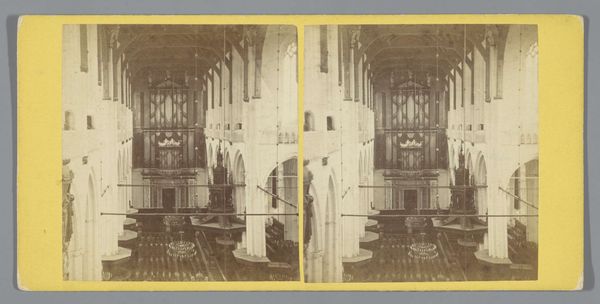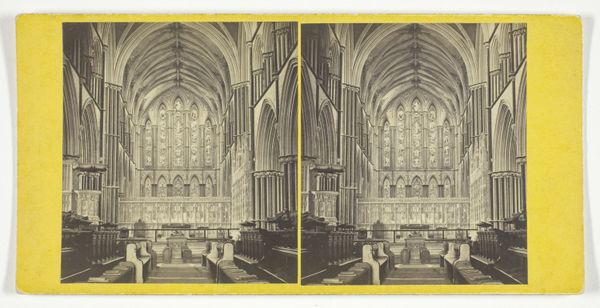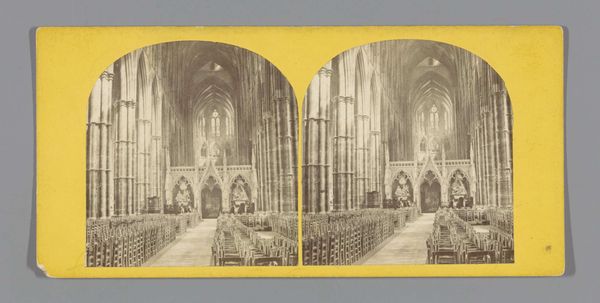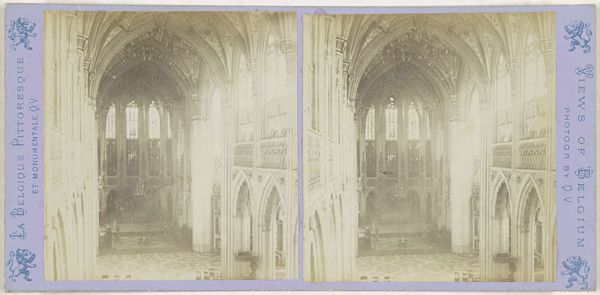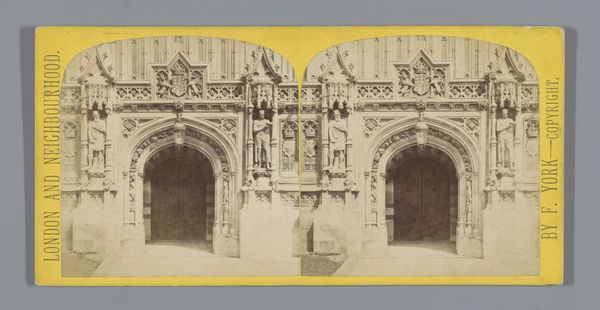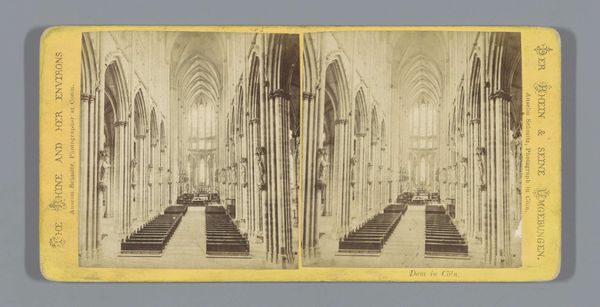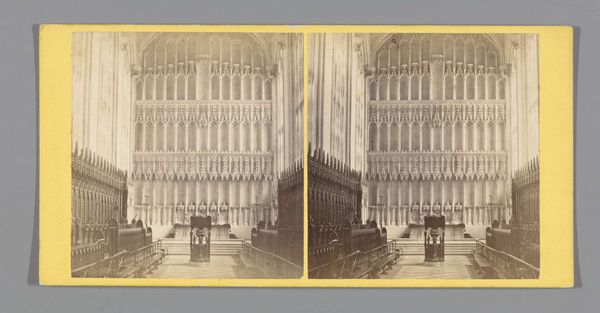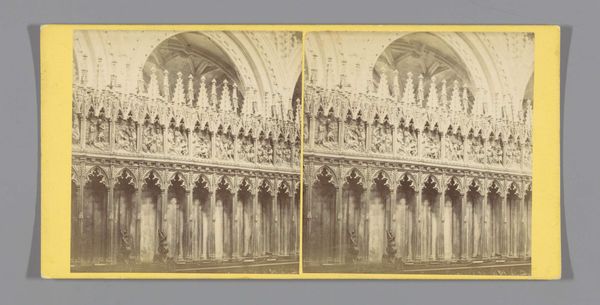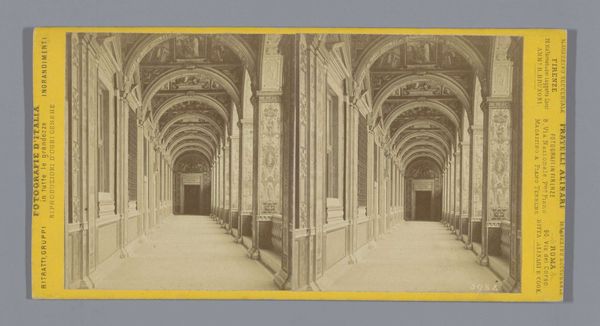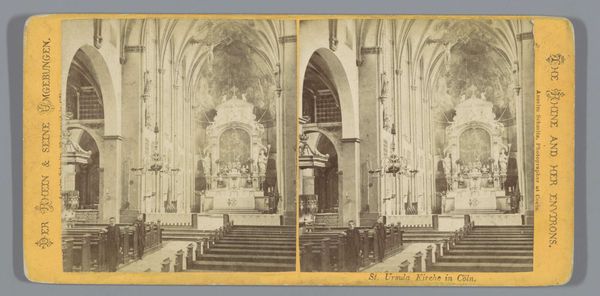
Gezicht op het interieur van het Paleis voor Volksvlijt in Amsterdam 1860 - 1885
0:00
0:00
pieteroosterhuis
Rijksmuseum
photography, gelatin-silver-print
#
photorealism
#
landscape
#
photography
#
gelatin-silver-print
#
realism
Dimensions: height 83 mm, width 170 mm
Copyright: Rijks Museum: Open Domain
Curator: Here we have Pieter Oosterhuis's "Gezicht op het interieur van het Paleis voor Volksvlijt in Amsterdam," taken between 1860 and 1885. It’s a gelatin silver print currently housed here at the Rijksmuseum. Editor: The cavernous space almost seems to inhale the rows of empty chairs. The lighting creates a real sense of depth, guiding the eye right to the back of the hall. Curator: It’s fascinating to consider the social context here. The Paleis voor Volksvlijt, or "Palace of Industry," was designed as a space for trade and national pride. Oosterhuis captured its interior during a period of industrial boom and bourgeois ascendancy. The gelatin silver printing process itself, relatively new at the time, offered a detailed and reproducible image accessible to the masses. Editor: Absolutely, but it's the meticulous formal construction that really grabs me. The receding lines of chairs and architectural supports create this overwhelming feeling of perspective and ordered space. The subtle tonality within the monochromatic print is extraordinary. The contrasts shape the space beautifully. Curator: Consider also the labour involved. Constructing the building was a major undertaking, requiring a multitude of skilled workers. Likewise, the labor connected to creating a photographic print is worth mentioning, it has gone through technological shifts impacting labour significantly. Editor: You are absolutely right. I was too focused on the aesthetics. All the same, the formal qualities serve a function. The rigorous organization of space and linear perspective communicates values of order and industry central to the era. It's more than just a picture, but it’s a visual articulation of an emerging modern society. Curator: And it speaks volumes about access. Who were the visitors, what social classes interacted, and what commodities circulated? I consider this piece an early form of corporate branding for industrial capitalist endeavors. Editor: So, as we consider these varied views, whether you are moved by the composition and the careful play of light or are intrigued by the industrial ambitions mirrored in the image, Oosterhuis’ photograph offers much to ponder. Curator: Exactly. A stark portrayal of space, a silent tableau, speaks volumes about labor and aspiration in that epoch.
Comments
No comments
Be the first to comment and join the conversation on the ultimate creative platform.

